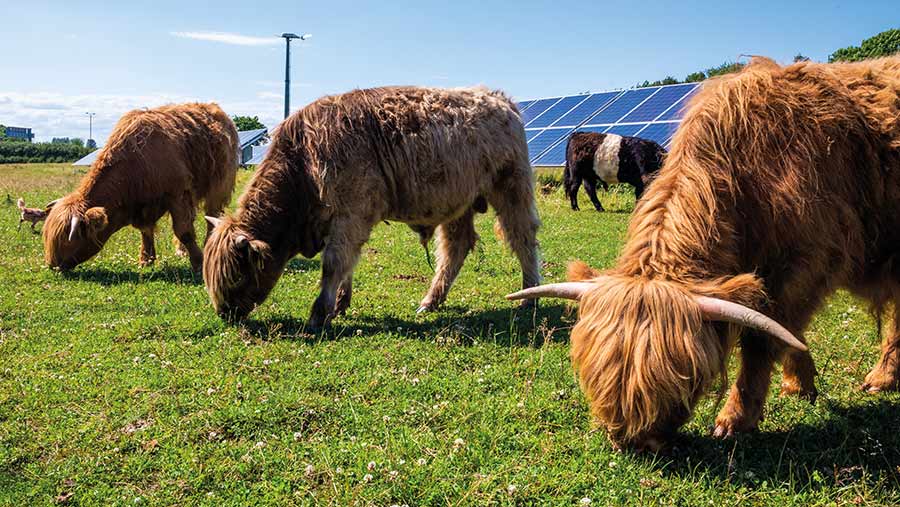Scots government sets out plans for future farm support
 The government wants to give tenant farmers more diversification opportunities © Harry/Adobe Stock
The government wants to give tenant farmers more diversification opportunities © Harry/Adobe Stock A major overhaul of Scottish farm tenancy legislation is looking likely as the government pledges to give tenant farmers and crofters the same opportunities as landowners to access new agricultural support cash from 2025.
The Scottish government launched its latest consultation on future agricultural policy on Monday 29 August, setting out plans for a four-tier support structure of direct and indirect payments, with all cash conditional on farmers delivering climate and biodiversity outcomes.
Multiple reforms are also planned within the new Agriculture Bill, including a requirement that all agricultural workers receive the real Living Wage, which is currently £9.90/hour for workers aged 18 and above, and making subsidy payments conditional on achieving minimum standards for livestock health and welfare.
See also: Opinion: Future Scottish farm support must include a stability payment
But one of the most radical changes proposed is to tenancy legislation.
The government wants to update the calculation for rents currently set out in the Land Reform (Scotland) Act 2016. Rent reviews would need to consider a farm’s earning potential, the economic outlook for agriculture for the subsequent three years, and comparable rents for secure or fixed-duration tenancies.
It also wants to extend the list of diversifications permissible in tenancy agreements.
Under current law, tenant farmers need their landlord’s agreement before they diversify into tree planting or agri-tourism, but the government wants the right to define an “acceptable diversification” to help tenant farmers access schemes to meet biodiversity and climate change mitigation goals.
Four-tier payment system mooted
The new support structure proposed by the Scottish government would make direct payments under two of the four tiers.
Tier 1 would support active farming and food producers, with area payments conditional on farmers meeting climate, biodiversity and business efficiency outcomes.
Under Tier 2 there would be enhanced payments for businesses that are highly effective in reducing greenhouse gas emissions and carrying out nature restoration and enhancement.
Farmers could qualify for indirect payments under tiers 3 and 4.
Tier 3 payments would be for targeted actions to support nature restoration, innovation support and supply chain support, with schemes that support the industry to gain knowledge and skills to manage land sustainably.
Tier 4, known as complementary support, would be for financial help to fund continuous professional development (CPD), advisory services, tree planting, woodland management, and peatland restoration and management. The Agricultural Transformation Fund would come under this tier, as well as headage payments for beef and sheep.
The Scottish government’s climate change plan commits the country to reducing agricultural emissions by 31% by 2032.
It is seeking to amend the Agricultural Holdings (Scotland) Act 1991 too, by changing the rules around the process at the end of an agricultural tenancy when the value of tenant improvements is calculated, known as waygo.
Not only would climate change mitigations undertaken by the tenant be considered, to encourage uptake of schemes, but there would be a legally binding timescale for the wrapping-up process to avoid some of the current delays that exist around those payments.
Currently, 3,821 tenancies in Scotland fall under this legislation.
The government said these measures to “modernise” tenant farming would give tenants “the same opportunity to adapt to the future as the rest of Scottish agriculture”.
Farmer collaboration
Rural affairs secretary Mairi Gougeon said these proposals and others had been “directly informed” by last year’s consultation on agricultural transition. There had been 314 responses – 224 from individuals and 90 from organisations.
Input from the Agricultural Reform and Implementation Oversight Board and feedback from farmer-led expert groups in each sector, including beef, dairy, pig, arable, upland and crofting, was also considered.
“Continuing this close collaboration with the sector will be vital as we bring forward new legislative proposals in this parliamentary session,” Ms Gougeon said.
- The consultation will run until 21 November, with a new Agriculture Bill expected in 2023.
Mixed reaction to future farming consultation
NFU Scotland has criticised the consultation as being short on detail at a time when the industry is “desperately seeking direction and reassurance” on Scottish farming policy.
President Martin Kennedy said the consultation was full of “more plans and declarations” when what the industry needed was a policy that supported farm output, including measures to help agriculture cut its carbon footprint and enhance biodiversity.
“The work has already been done on this by numerous groups and through previous consultations,” he said.
With spiralling input costs, Mr Kennedy insisted that the industry “doesn’t have time to wait for detail”.
“This consultation is about delivering the necessary powers, but it does not fill the yawning policy gap that our members want to see filled,” he said.
Quality Meat Scotland said it was “encouraging” that there was a commitment to sustainable food production – the consultation proposes grants to support the agri-food sector and related bodies.
However, more detail would be needed “to give producers confidence to ride out this challenging period”.
